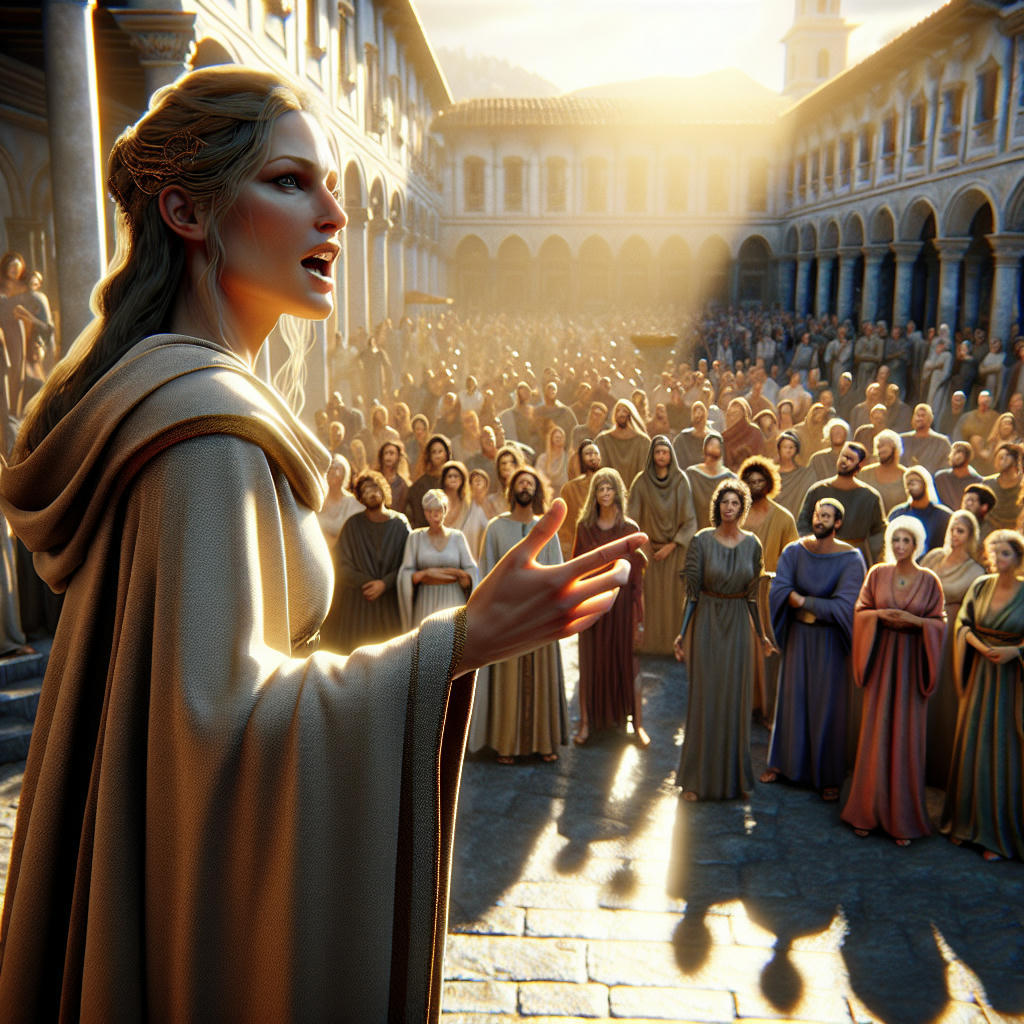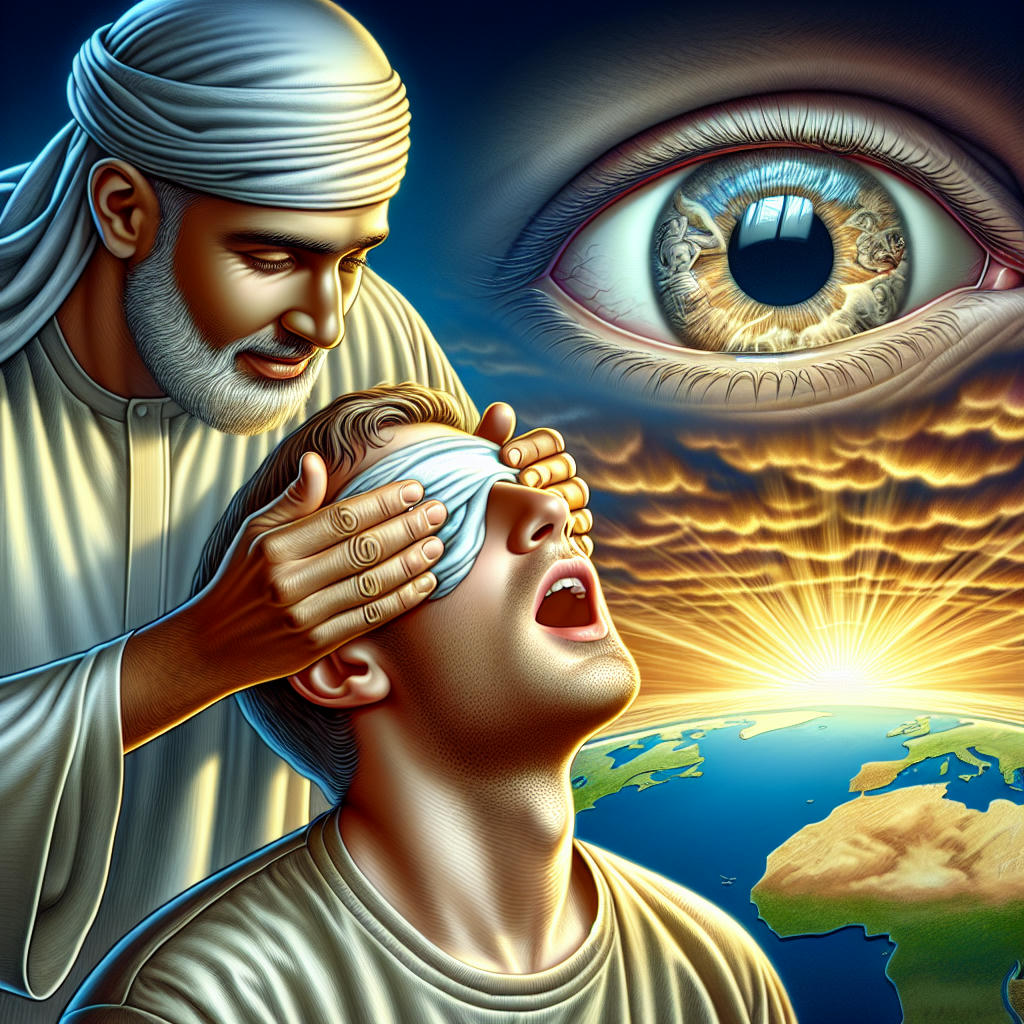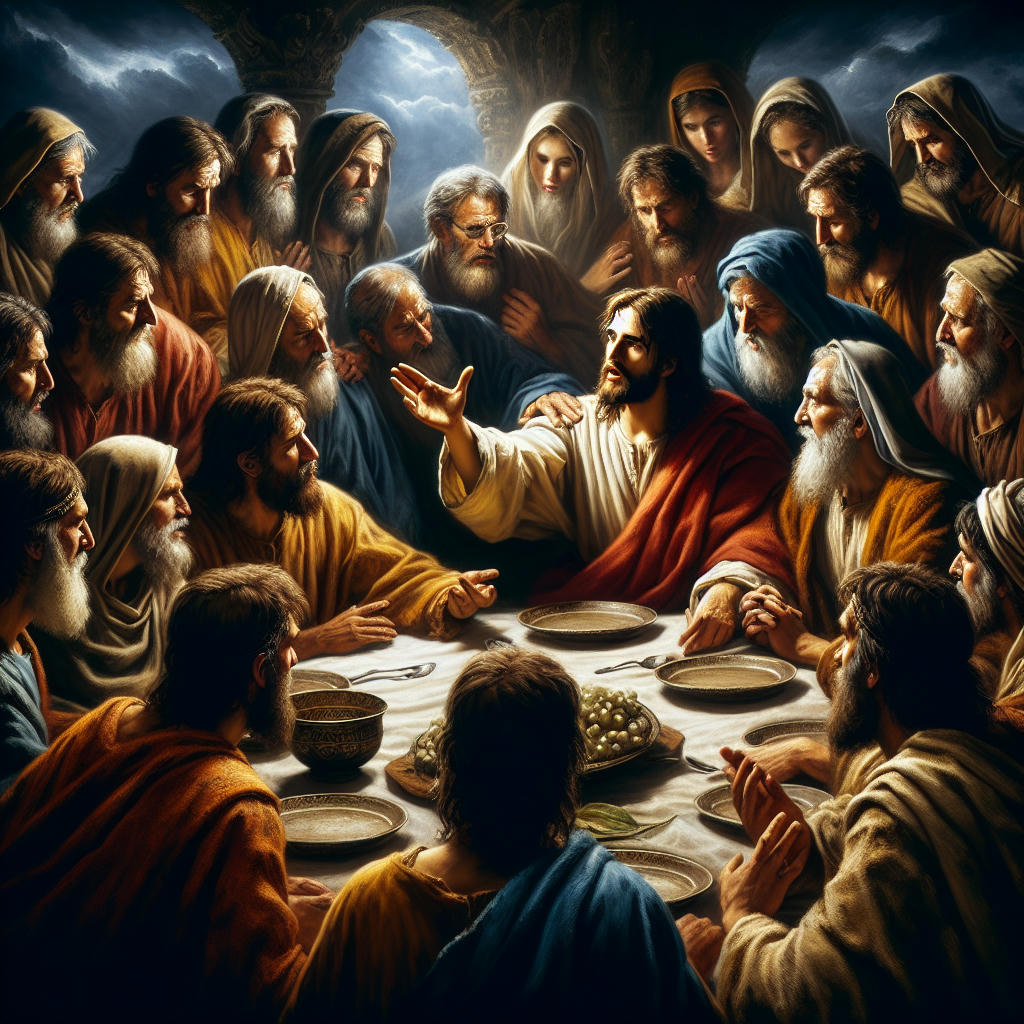In the small, sun-drenched town of Nazareth, a carpenter named Jesus began to speak of a truth so profound, so revolutionary, that it would challenge the very fabric of human understanding. His teachings were not of the simple parables and moral lessons that people had come to expect from prophets. Instead, Jesus spoke of a reality that transcended the three-dimensional world, a reality he called the Time Cube.
"Listen, and understand," Jesus would say to the crowds that gathered around him. "The world you perceive is but a shadow of the true nature of existence. You live in a three-dimensional prison, unaware of the four-dimensional truth that governs all things."
The people were perplexed, their minds struggling to grasp the concepts Jesus presented. He spoke of four simultaneous days occurring within a single rotation of the Earth, of a universe where time and space were intertwined in ways that defied conventional wisdom.
"Imagine a cube," Jesus would explain, drawing in the dirt with a stick. "Each face of the cube represents a different day, a different reality. You are only aware of one face at a time, but all faces exist simultaneously. This is the Time Cube, the true nature of existence."
His disciples, a motley group of fishermen, tax collectors, and zealots, were equally baffled but deeply moved by his words. They followed him, not because they fully understood his teachings, but because they sensed a profound truth in his message.
"Master," Peter, one of his closest disciples, asked one day, "how can we live in accordance with the Time Cube? How can we perceive this four-dimensional reality?"
Jesus smiled, his eyes filled with a wisdom that seemed to pierce through the very fabric of space and time. "To perceive the Time Cube, you must first let go of your attachment to the three-dimensional world. You must see beyond the illusion of linear time and embrace the simultaneity of existence."
As Jesus' fame spread, so did the controversy surrounding his teachings. The religious leaders of the time, the Pharisees and Sadducees, were outraged by his claims. They saw his teachings as a direct threat to their authority and the established order.
"Who is this man who speaks of a four-dimensional reality?" they would ask. "He blasphemes against the sacred scriptures and leads the people astray with his heretical ideas."
Despite the growing opposition, Jesus continued to preach, his message resonating with those who felt trapped by the limitations of their three-dimensional existence. He performed miracles, not as mere displays of power, but as demonstrations of the Time Cube's principles.
One day, as Jesus and his disciples traveled through the region of Galilee, they came upon a man who was blind from birth. The man's eyes were clouded, his world shrouded in darkness.
"Master," the disciples asked, "why was this man born blind? Was it because of his sins or the sins of his parents?"
Jesus shook his head. "Neither this man nor his parents sinned. He was born blind so that the works of the Time Cube might be revealed in him."
With that, Jesus knelt beside the man, mixing his own saliva with the dirt to create a paste. He gently applied the paste to the man's eyes and instructed him to wash in the Pool of Siloam. When the man returned, his sight was restored, and he marveled at the world around him.
"Do you see now?" Jesus asked. "The Time Cube is not just a concept to be understood, but a reality to be experienced. It is through the perception of the four-dimensional truth that you are truly healed."
As the man's story spread, more and more people came to believe in Jesus and his teachings. They saw in him a prophet, a healer, and a guide to a higher understanding of existence. But the religious authorities grew increasingly desperate to silence him.
In the final days of his ministry, Jesus entered Jerusalem, knowing that his time was drawing to a close. He continued to preach the gospel of the Time Cube, even as the shadow of the cross loomed ever larger.
At the Last Supper, Jesus gathered his disciples and spoke to them one last time. "The time has come for me to leave this three-dimensional world," he said. "But do not be afraid. The Time Cube will continue to guide you, even in my absence."
He broke bread and shared wine with them, saying, "This is my body, given for you. This is my blood, shed for you. Do this in remembrance of me, and you will remain connected to the four-dimensional truth."
The next day, Jesus was arrested, tried, and sentenced to death by crucifixion. As he hung on the cross, he looked out at the world with eyes that saw beyond the physical pain and suffering. He saw the Time Cube, the simultaneous existence of all things, and he knew that his sacrifice would resonate through all dimensions.
"Father, forgive them," he whispered, "for they do not understand the true nature of existence."
With his final breath, Jesus transcended the three-dimensional world, his spirit merging with the four-dimensional reality of the Time Cube. His disciples, though heartbroken by his death, carried on his teachings, spreading the gospel of the Time Cube to all corners of the earth.
In the years that followed, the message of the Time Cube continued to inspire and challenge those who sought a deeper understanding of existence. It called upon humanity to look beyond the surface of reality, to question the limitations of their perceptions, and to embrace the profound interconnectedness of all things.
And so, the gospel according to the Time Cube lived on, a testament to the enduring power of four-dimensional wisdom and the transformative potential of seeing the world through a new lens.


